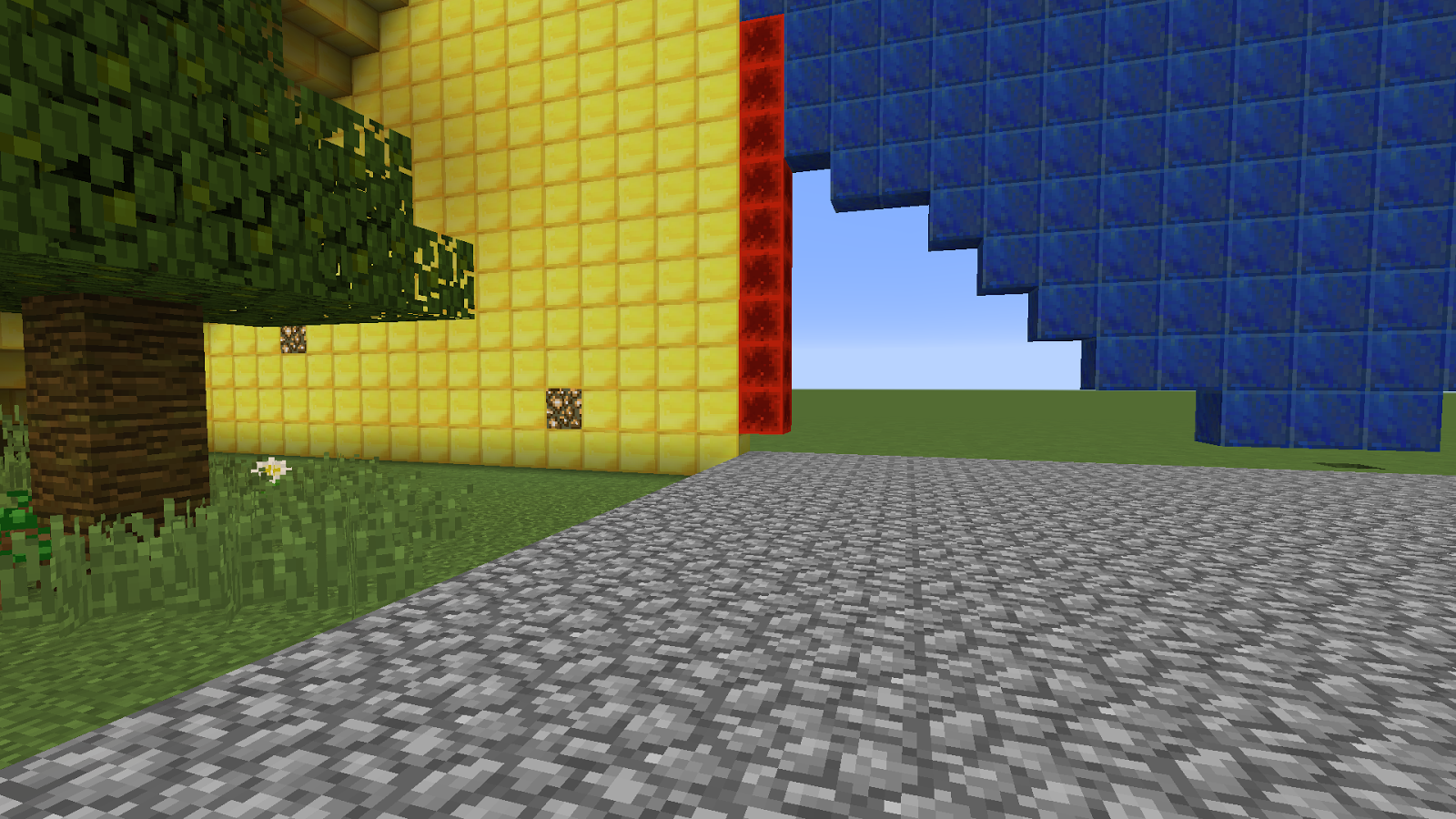Below are six screen shots are six different examples of Monocular Depth Cues.
Monocular depth cues are basically visual tricks that the 3D artist or programmer uses to make our eyes think the objects that we're looking at are actually in a real 3D space.
Size differences - Objects that are further away from us appear to be smaller than the objects that are closer to us. If we draw objects larger that the other identical objects, it will give the illusion that it is closer. This enhances the illusion of depth of view. Another example is looking down the street at a line of parked cars. The closer cars appear larger than the ones at the end of the block.
Texture Density - Texture density is the depth cue of having a texture of an object or a plane fade out or become a solid color as it appears to get farther away. The texture of the grass around the block is clearly visible. As you go further down the plane, the texture seems to blend in and eventually become just a solid green line across the horizon. A real life example of this would be the cobblestones on a big park or plaza. Around you, they appear clear and blocky. As you look further down the plaza, they appear to become one granite or brick color in the distance
Linear Perspective - Lines that are closer to our line of perspective appear to be larger than lines that go away from our line of vision. In this picture, the top, close portion of the water fall is much fatter than the bottom of the water fall. The lines getting smaller as they trail off give the depth illusion and make it appear in the distance. A real life example would be train tracks. When you're standing between two, they appear large. As they fade into the distance, they almost appear to touch on the horizon at the furthest point.
Occlusion - Objects that can block (or occlude) another object can appear to be closer in relation to objects that appear behind it. With something behind something else, we automatically assume that it is further away from the object that is in the forefront. In real life, if we see a tree or shrub in front of a lake, it would be safe to guess that the lake is further in the distance than the shrubs.
Lighting and Shading - When light strikes an object, it appears to give that object extra depth and volume. When the lighting fades off or gets darker, it can give the appearance that the object is trailing off, away from this light source. A real life example is if you shine a spotlight up the side of a skyscraper, the light on the first few floors will be brightened up, and vivid. As you go higher up the building, the light will fade off, letting you know that the upper floors are many stories higher.
Atmospheric Perspective - When objects are close to us, the details on that object are generally clear and in detail. When that same object, or a similar object is far away, the details on that object get fuzzy and blurry, due to the lighting and atmospheric conditions. We assume it is further away because the object is blurrier. Maybe a hot desert road would be a good example. Up front, you see the yellow stripes and the cracks of the asphalt, but as you go further, the blazing sun and the distant lighting, make that road appear further away and almost melt into the horizon.



























































